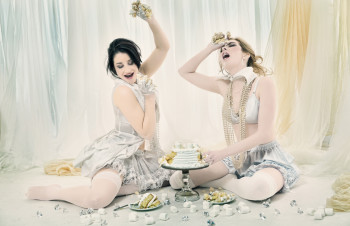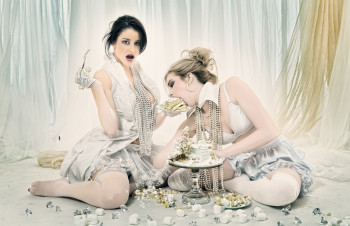Detlef Koertge grew up in Germany before he moved to the United States in 1997. He met his artisan wife Debra and decided to stay and live with his family in the United States. Detlef started his photographic excursions when he was 12 years old but he only got serious about portrait photography in 2007. He never had a formal education in visual arts or photography and frustration with his photographic results led him to sell his photography equipment multiple times over the years.
Left with a point-and-shoot camera he felt something is missing in his life and he returned to a more serious approach to photography, humbled, but even more enthusiastic.
Detlef studied the work of great artists such as Bruce Barnbaum, Edward Weston, Man Ray, Robert Maplethorpe, Immogen Cunningham, and Greg Gorman. He established his niche in the world of photography in portraiture and people photography. Photography is a passion and a creative outlet for Detlef. He is not what is commonly referred to as a “professional photographer,” but rather a “photographing professional.” In his day job he is a Director of Engineering, leading and inspiring a large engineering organization at a global Fortune 100 company in the Chicago suburbs. He lives with his wife and son in Carpentersville, Illinois.
Interview with Detlef Koertge
Images above are from the Detlef Koertge feature artist portfolio presentation titled “Another White Story” in our MIROIR Magazine “Viva la Vita”.
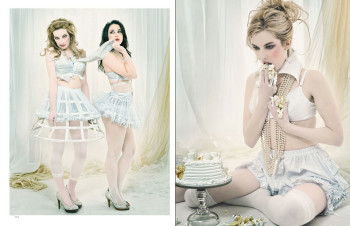 Q: Tell me something about your history as a photographer. Did you have a formal school education or are you self taught?
Q: Tell me something about your history as a photographer. Did you have a formal school education or are you self taught?
A: Photography is somewhat of a roller coaster ride for me. Over the years, I picked up a camera several times and then, being disappointed and frustrated with my results at the time, I sold everything three or four times. I think it was in 2007 when it finally clicked, pun intended. I was dabbling in different genres of photography: landscape, still life, food, macro, and portrait when I recognized that I like to make photographs of people. When I was younger I had some early episodes in people photography but my style was rather odd and maybe too rough at the time, which did not appeal to my audience. Unfortunately, that threw me off course and I was lost. I never had a formal education in photography or visual arts. I always create photographs that I would like to see. I studied electrical and systems engineering and I am a believer that there is a deep and intrinsic connection between art, design, and engineering. While photography was not a constant, this notion accompanied me for my whole life. There is a beauty in engineering and design just as there is beauty in art. I think other artists, foremost Leonardo Da Vinci, also saw and embraced this connection.
Q: We’re interested to hear about your basic inspirations that drive your creative energies.
A: Much if not all of my inspiration comes from classical paintings and traditional art. I also draw from other photographers work, both contemporary and classical. Then I see and hear things happening around me and I start putting one and one together which often makes more than two.
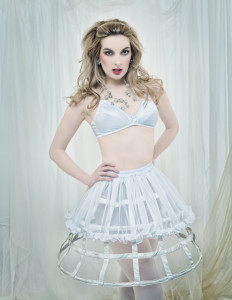 Q: What were the circumstances that planted that first creative spark in you, and how is that tied to your current inspirations?
Q: What were the circumstances that planted that first creative spark in you, and how is that tied to your current inspirations?
A: I don’t recall where my interest in photography came from. I remember vaguely that I inherited a bellows camera from my grandpa and I was fascinated. At first I was fascinated by the technology. But then I found that 120 roll film, at the young age of 12, was a hassle and I traded the bellows camera for a cheap instamatic point and shoot. A move, which I did regret later. However, those little prints from that instamatic camera got me excited. It seemed to me that while the camera captured what’s in front of the lens, I can manipulate it by moving around and changing the angle giving it a different perspective. That was really cool at the time. I also remember lighting a good friend of mine with a flash light from below his face to get the horror film look. I succeeded and he hated it.
Q: Do you have others in your family with creative energies?
A: My wife and soul mate Debra is a true artisan and a very gifted person. When I started my portrait photography endeavors with cheap mono-lights and bed sheets as backdrops, she was my first model. We spent hours in the basement or other rooms of the house making photographs. That also got her into modeling and I do believe that some of her likenesses were published as part of a Nina Pak editorial here in Miroir. She has a very fine eye and she is a great stylist, decorator, and makeup artist. Often those skills come in handy on my shoots.
Q: Was there a particular person in your past that nurtured your creative instincts, like an artist, or a teacher, or mentor of some kind?
A: I tried to get on the nurturing nipple of some photographer colleagues but it turned out that most of them are rather tight lipped about their craft and their artistic process. I guess the competition in photography drives such behavior. There are of course exceptions, like my dear friend and fellow photographer Nina Pak, who is always helping and engaging in open discussions about everything related to our work. It is such a pleasure to sit down with a spirited artist like her and just bounce off ideas, talk about old techniques, or just discuss art history. And then there is my friend and painter Jerry Strub. We have done a few collaborations where Jerry took my photography to a new level by physically incorporating it into his paintings. We just sat one day talking about the differences between creating a painting and photography and he suggested that we should try to combine both our work and see what happens. We did and Jerry’s resulting mixed media art is a great success.
 Q: Where was the source of your creative inspiration, initially, and how has it been nurtured throughout your creative endeavors?
Q: Where was the source of your creative inspiration, initially, and how has it been nurtured throughout your creative endeavors?
A: Painters: Ivan Albright, Vargas, Elvgren, Magritte, Norman Rockwell, Caravaggio, Whistler.
Photographers: Richard Avedon, F.C.Gundlach, David LaChapelle, Platon, Deborah Turbeville, Paolo Roversi, Tim Tadder, Bill Simone, Greg Gorman
Q: Where does your creative process begin?
A: If I would know…
Q: Where do you get your ideas?
A: All over the place. I seen things happening, I see a painting, a photograph, and I start wondering if I can take this in a different direction, or make a funny version of it, or if I can inverse its message. I did a self portrait called “Writer’s Block” which was a result of me not being able to come up with any ideas for my next project. I thought: hmm, that’s similar to a writer’s block, and the idea for that shoot was born. I added some elements of Goethe’s Faust to it to make it a bit funnier. Or I listen to the news and hear about a serial killer. Serial killer sounds pretty much the same as cereal killer to my German ears. So I thought about doing a shoot in good old B&W Hollywood Glamour style where a woman puts some poison in a cereal box and call it Cereal Killer. That’s just how my brain works.
Q: How do you feel that creating your “art” is a part of your lifestyle, and life’s plan for you?
A: I like to quote Robert Mapplethorpe on this question: “I am obsessed with beauty. I want everything to be perfect, and of course it isn’t. And that’s a tough place to be because you’re never satisfied.” It could have been me saying this.
Q: How has your creative nature influenced your personal relationships?
A: I’ve met a bunch of very nice and talented people since I started to work in portrait and editorial photography. The two most influential ones are Nina Pak and Jerry Strub.
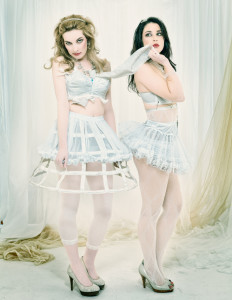 Q: What is a typical day like for you? Say something about the decision making process in your approach to what you do… Do you ever want to get away from it all? What do you do for release, and to shake out the cobwebs of energy spent?
Q: What is a typical day like for you? Say something about the decision making process in your approach to what you do… Do you ever want to get away from it all? What do you do for release, and to shake out the cobwebs of energy spent?
A: I probably should spend more time doing something else. There are days, and sometimes weeks, where I don’t want to touch the camera or edit at all. I like to travel places with my wife and enjoy the outdoors. Our favorite location in the west is Sedona, AZ.
Q: How important in your art is the message, as in, imbedding a literal purposeful message into your artistic aesthetics?
A: It depends on the image I’m working on. Sometime there is a purposeful message and sometimes it’s just going to be a nice image. I suppose one could interpret any photograph and find a message in it. I’ve heard about artists reading articles about their art and they are surprised what other people see in their images. As mentioned before, I always try to tell a bit of a story with my images. I think only in my more conceptual shoots do I try to embed a literal and purposeful message.
Q: How do you feel living in your city/town/country, affects your creative energies or influences your work?
A: Being born and raised in Germany has a profound impact on my imagery. It seems that while creating images, my cultural background leads to decisions that I wouldn’t make coming from a different environment. Coming from a culturally rich city that was founded in 1050 AD, I unconsciously draw from these surroundings and the deep tradition. On the other hand, modern Europe and Germany is very liberal and I ran more than once into situations where my work was considered inappropriate by American standards. One of my early influences was Albrecht Dürer, a German painter, printmaker, mathematician, and theorist from my hometown, Nuremberg. When I was young I felt that his paintings, which are almost photorealistic, are the only real art and I was not able to wrap my head around paintings like Picasso’s Guernica. I thought this modern art is not really art. Something changed and quite unexpectedly for me and my friends I found myself drawn to Magritte, Kandinsky, and Miro. After I moved to the United States I discovered Ivan Albright, Norman Rockwell, and James McNeill Whistler, to name a few artists that caught my interest. Now, after living for 15 years in the United States, I feel that my work is a nice mix of influences stemming from both the old world and the new world.
Q: How do you feel the “cultural landscape” of your city/town/country affect your work?
A: The Chicago suburbs are not the most energizing environment from an arts point of view. Downtown Chicago is a more fertile ground for creativity and artistry. Chicago’s Art Institute and The Museum of Contemporary Art are always worth a trip. But then there is also a wonderful art scene that is not necessarily represented at the famous museums. Small art initiatives spring up in the suburbs as well, and our neighboring towns Elgin and Geneva seem to thrive.
Q: What do you think of art as activism?
A: That heavily depends on the activism. Piss Christ, a 1987 photograph by the American artist and photographer Andres Serrano, is an example of activism that I think was taking it a step too far. It’s very offensive in my humble opinion and I think it only exists for its shock and awe. To the contrary, August Bradley’s 99 Faces of Occupy Wall St series is a unique and creative approach to a very political topic. This kind of activism is right down my alley. I like to stir up things too, but without being offensive. Some of my photography may find disapproval with certain groups, but that’s fine.
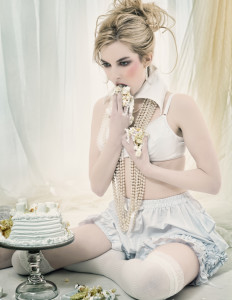 Q: Can you say something about your use of storytelling and its role in your work (if this applies)?
Q: Can you say something about your use of storytelling and its role in your work (if this applies)?
A: Not that I’m always successful, but I try to tell a story with my images. Without that notion on my mind I always feel that the resulting photograph has little or no meaning.
Q: How important is the audience in the personal drive you have to create?
A: I actually like being liked, if that’s what you’re looking for. However, I would not sacrifice my thing just to be liked. As a photographer, I only need one enthusiast to justify me. During the creative process I don’t spend any thought if the final image is going to be liked. That’s completely irrelevant at that point. Once I’m done and the final product is out there, I enjoy being liked. The interesting thing, is that if there is one negative comment between hundreds of positive ones, that can really put a damper on my mood.
Q: How does personal intuition play a part in your life’s work?
A: Intuition is an important part of my work. I sometimes feel that I’m right while I don’t know that I’m right. There are all those photography rules about composition, lighting, colors, and so on, but I can’t think about them when I do my work. There is a moment when I look through the viewfinder and it just feels right to press the shutter. Does this always work? No, it doesn’t. But it does create beautiful results most of the time.
Q: What would you hope to accomplish in the next few years?
A: I’d like to create a body of work that may be remembered.
Q: As a unique voice in the larger artistic community, how does that affect your goals?
A: In photography, as crowded as it is these days, having your own style or uniqueness is certainly helpful. But at the end, the photographs I make are a result of what’s in me and who I am. The whole process from having an idea, staging a set, lighting the set, taking the picture, editing the files, is driven by who I am. I can’t change that. I can’t hide my personality in my images. I think that’s true for any art form. All the decisions I make along the process are driven by my background, what I know, and who I am. Obviously, there is technique but the decision about which technique to use when, comes from inside, sometimes only as a visceral reaction to some external stimulus. Coming back to the question, I think my goals are not much affected by the larger artistic community. I hope my goals may have an effect on the larger artistic community.
Q: What is core to your personal mission?
A: I’m not sure if I have a mission. I love what I do and I do what I love. That’s about it. If there is a mission then it is to become a better photographer creating memorable images, leaving a positive impact.
Q: Do you have upcoming projects that you’re inspired with?
A: Yes! I have plenty of ideas that I have a hard time finding the time to realize. I’m working on a project called Goddesses that was inspired by Madame Yevonde’s work. Another project that is in the back of my mind for some time is “Big Beautiful Women.” You may let your imagination run wild on how these will turn out.
Q: What is your idea of success?
A: You’re putting me on the spot here. I guess for most artists being successful means being able to make a decent living. I am not trying to be a “fine art” artist, meaning that I would want to see my work hanging somewhere in a museum or a fireplace at a rich man’s place. I wouldn’t mind, but it’s not a main driver for me. I consider it a success to have an editorial in Miroir and from here the sky is the limit. Vogue, W, Vanity Fair, you name it.
A: Right now? Being published in Miroir. Besides that, I’m happiest when I find time to create. The creative part is usually the smallest part in daily activities, but the most important from an artistic point of view.
Q: What is your moment of perfection?
A: When I lean back, looking at the final image after hours in the studio and in post processing saying to myself, “It’s good now.”
Q: Where do you go when you need that fire inside you stoked? What, to you, is art?
Q: That’s a loaded question. And I continue to struggle with an answer. In 1937, Man Ray proclaimed in his essay “La photographie n’est pas l’art” that photography is not art. That is an absolute and we could stop right here if we believe that’s true. I had many discussions with friends and artists about this topic. I tend to leave it up to the viewer to decide if my creations are art or not. It does not matter to me if one considers my work art or not. I don’t set out to create art. I do my photography the best I can and hope that the final result pleases my eye and maybe one or the other enthusiast. To me visual art is something that inspires, evokes feelings and emotions, makes you think or ponder, maybe cry, tilts your head and makes you wonder. Art is a cultural good too. I remember having a long discussion about Jeff Koons’ “Girl with Dolphin and Monkey” photograph. For those who don’t know this image: a girl wearing a bullet bra and bloomers sits on an inflatable dolphin in front of a sofa holding an inflatable monkey in her hands. This is from the Whitney Museum of American Art in New York. I leave it up to the audience to decide if this is art or not. All I’m saying is that art seems to have a wide gamut.
Q: What’s the best part of being who you are right now? What do you do in your ‘other life’?
A: I am a Director of Engineering at a large medical device company, leading and inspiring a team of engineers to create exciting, useful, and safe medical devices. And as you already know, I’m obsessed with beauty and I’m heavily involved in all aspects of user interface design and how we present our systems to our customers.
By MIROIR Magazine in MIROIR MAGAZINE – “Viva la Vita” Collection
160 pages, published 2/14/2013



